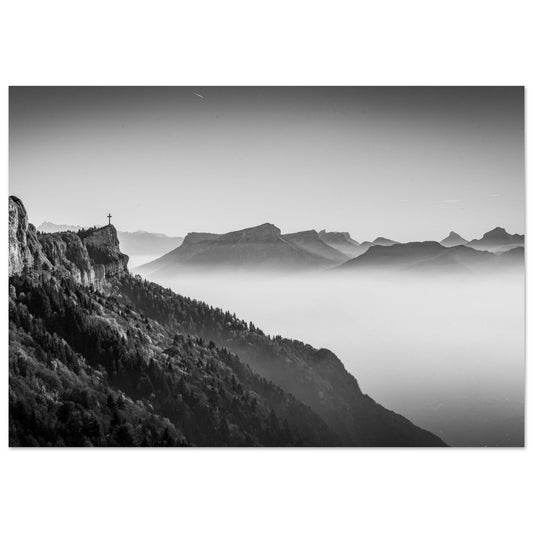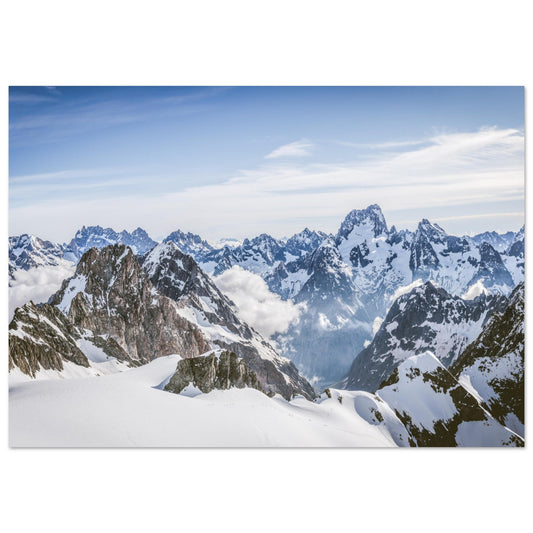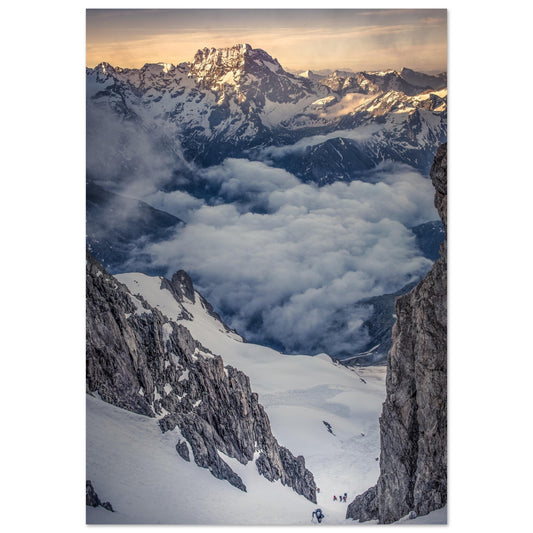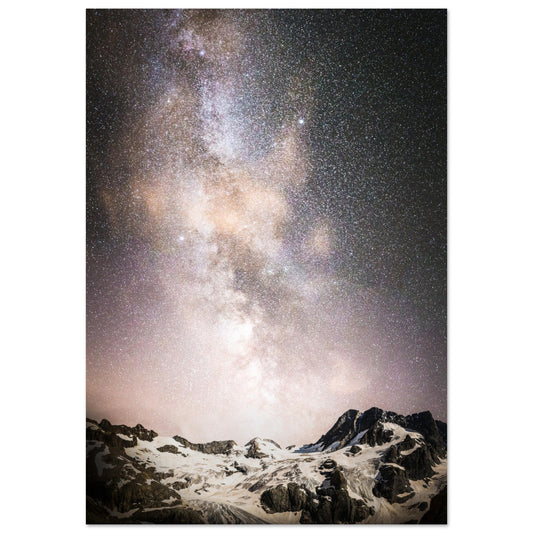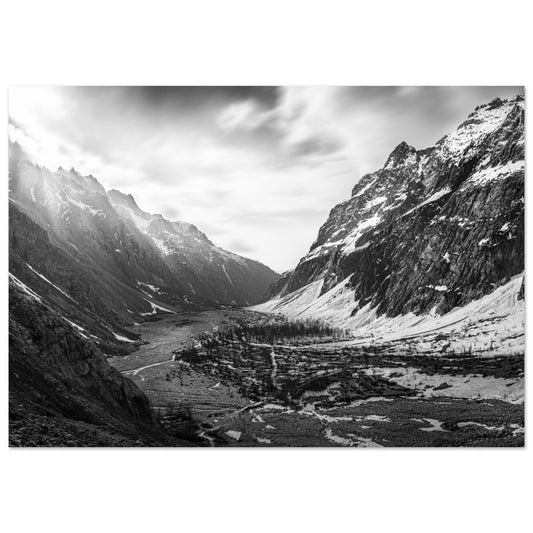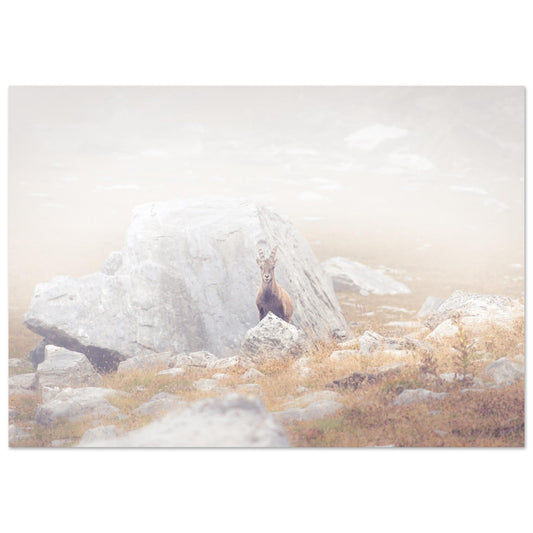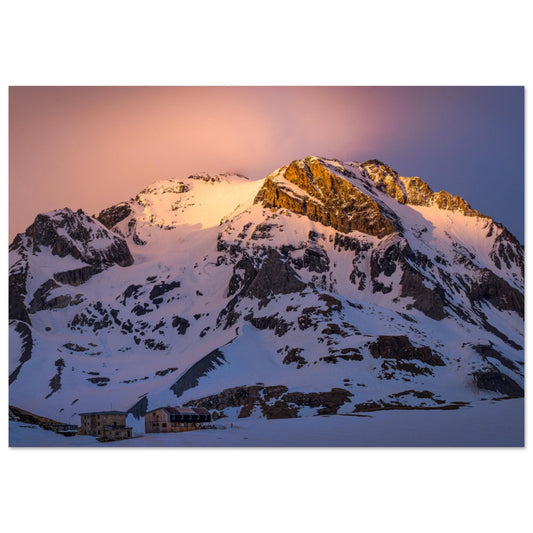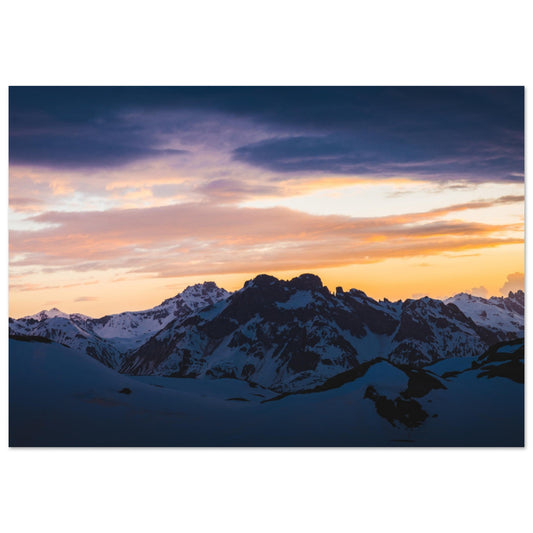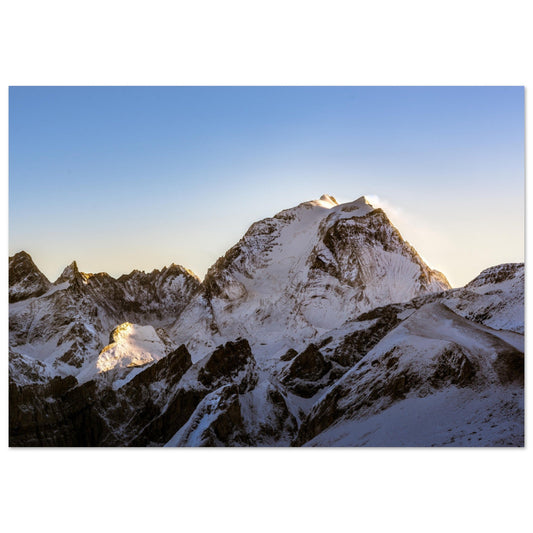

Dear mountain photography enthusiasts,
Do you dream of capturing the majesty of snow-capped peaks, lush green valleys and crystal clear lakes? You are not alone ! Landscape photography is a subtle art that requires both artistic sensitivity and technical mastery. Among the many composition techniques, the rule of thirds is an essential tool for creating striking images. In this guide, we will explore this rule in depth and give you practical advice for applying it during your outings in the mountains.
What is the rule of thirds?

The rule of thirds involves dividing your frame into nine equal rectangles by drawing two horizontal lines and two vertical lines. Imagine an invisible grid superimposed on your image. Key elements in your photo should be placed along these lines or at the intersection points . Here's why this rule works so well:
- Visual balance : By placing important elements on the lines or intersection points, you create a visual balance that attracts the viewer's eye. Your image becomes more harmonious and pleasant to contemplate.
- Point of force : Intersections are points of force . If you want to highlight a specific element (like a snowy peak or a solitary tree), position it at one of these points. Your subject will thus be highlighted.
How to use the rule of thirds in landscape?
Line 1 : Position of the horizon
When photographing mountain landscapes, line 1 plays a very important role.

If the sky is spectacular (dramatic clouds, blazing sunset), or a physical element can make a delimitation between 2 spaces appear, place the horizon on the upper line . This will highlight the sky and give space to the mountain.
In this example, the top line 1 is almost positioned between the sky and the treetops . And it's perfect!
(yes we are not asking you to be perfectly 1/3 of the photo 🙃 📏)
Line 2: Interesting first shot

If you have a captivating foreground (rocks, wildflowers), place the horizon on the bottom line . This will highlight the ground and add depth to the image.
In this example, the bottom line 2 is positioned on the shadow of the drill . Once again, it's perfect!
3. Strength points
Intersections are points of force . If you want to highlight a specific element (like a snowy peak or a solitary tree), position it at one of these points. Your subject will thus be highlighted.
The points of force (5, 6, 7 and 8) between the horizontal and vertical lines allow you to position elements of your photo: people, monuments, animals, mountains, etc.
-

Point 7
The point of strength 7 is located on a church. This allows it to be highlighted .
-

Item 8
Strength point 8 is also interesting because it is at the tip of the shadow.
-

Start of line 2
The beginnings and ends of the third lines are equally important points. Here we notice that the start of line 2 is right on the edge of the road.
-

Start of line 1
The start of line 1 is at the end of the crest of the start of another.
In conclusion
By applying the rule of thirds, you will give your mountain photos a new dimension. Position natural elements to make your photo more aesthetic.
So, the next time you're at the top, remember this rule and let your creativity flow!
Remember: the mountain is your canvas, and your camera is your paintbrush. It's up to you to paint masterpieces!
Discover the most beautiful images of the Alps :
Photographic Prints – The Most Beautiful Images of the Alps
Here is my favorite selection of the Alps: lines of Mont-Blanc , ridges of Aiguilles Rouges and Aravis , glaciers of the Écrins , domes of the Vanoise , Dolomite peaks, reflections of high-altitude lakes . Each image becomes a photo board edited on Dibond aluminum — matte finish, sharp, glare-free — for elegant and long-lasting wall decoration .
Choose the alpine view that speaks to you — golden sunrises , blue hours on the lakes, silhouettes of ridges - I make it in the format and in the finish of your choice, made in France and ready to hang .
What you receive
A gallery-quality aluminum Dibond print , lightweight and sturdy, ready to hang above a sofa, desk or staircase.
Decorating advice
Bright interior: favor lake reflections and golden hours . Minimalist style: black & white edges. Large wall: 90×60 or 120×80.
Manufacturing & Delivery
Production in France , careful control and protected packaging. Fast delivery times depending on the format.
Explore by mountain range:
- Mont-Blanc & Chamonix — needles & glaciers
- Aiguilles Rouges — lakes & ridges
- Aravis — mountain pastures & valleys
- Écrins — Meije & seracs
- Vanoise — domes & valleys
- Dolomites — Tre Cime & Needles
👉 Order your Alpine photo print : gallery quality, made in France, formats of your choice.
-
Photo of Mont Granier, Chartreuse Massif
Vendor:Tableaux photos aluminium de montagneRegular price From €79,00 EURRegular price -
Photo of the Belledonne chain from the Lances de Mallissard
Vendor:Tableaux photos aluminium de montagneRegular price From €79,00 EURRegular price -
Photo of the Croix du Nivolet in front of the Chartreuse massif
Vendor:Tableaux photos aluminium de montagneRegular price From €79,00 EURRegular price -
Photo of the Croix du Nivolet in front of the Chartreuse massif - Black & White
Vendor:Tableaux photos aluminium de montagneRegular price From €79,00 EURRegular price -
Photo of a sunset over the snow-covered Chartreuse
Vendor:Tableaux photos aluminium de montagneRegular price From €79,00 EURRegular price -
Photo of a sunset over Mont Pelvoux and its glaciers, Massif des Ecrins
Vendor:Tableaux photos aluminium de montagneRegular price From €79,00 EURRegular price -
Photo of the Ecrins bar and the Rouies plateau
Vendor:Tableaux photos aluminium de montagneRegular price From €79,00 EURRegular price -
Photo of La Meije reflected on Lake Lerie, Emparis plateau, Arves massif
Vendor:Tableaux photos aluminium de montagneRegular price From €79,00 EURRegular price -
Photo of the Rouies Ice Plateau and Pointe Duhamel
Vendor:Tableaux photos aluminium de montagneRegular price From €79,00 EURRegular price -
Photo of Madame Carle’s Meadow, Écrins Massif
Vendor:Tableaux photos aluminium de montagneRegular price From €79,00 EURRegular price -
Photo corridor for the Rouies plateau and Ecrins bar
Vendor:Tableaux photos aluminium de montagneRegular price From €79,00 EURRegular price€0,00 EURSale price From €79,00 EUR -
Photo of a Milky Way above Les Bans and Pointe de la Pilatte, Ecrins massif
Vendor:Tableaux photos aluminium de montagneRegular price From €79,00 EURRegular price€0,00 EURSale price From €79,00 EUR -
Photo of Madame Carle's Meadow, Écrins Massif - Black & White
Vendor:Tableaux photos aluminium de montagneRegular price From €79,00 EURRegular price -
Photo of a baby ibex
Vendor:Tableaux photos aluminium de montagneRegular price From €79,00 EURRegular price -
Photo of a sunset over the Dente Parrachée, Vanoise Park
Vendor:Tableaux photos aluminium de montagneRegular price From €79,00 EURRegular price -
Photo of a sunset over Grande Casse and the Vanoise refuge
Vendor:Tableaux photos aluminium de montagneRegular price From €79,00 EURRegular price -
Photo of a sunset over the Grand Marchet and the peaks of Vanoise
Vendor:Tableaux photos aluminium de montagneRegular price From €79,00 EURRegular price -
Photo of a sunset over the Plan du Lac refuge, Vanoise
Vendor:Tableaux photos aluminium de montagneRegular price From €79,00 EURRegular price -
Photo of a sunrise over the Dente Parrachée, Dome de Chasseforet, Mont Pelve, Vanoise
Vendor:Tableaux photos aluminium de montagneRegular price From €79,00 EURRegular price -
Photo of a sunrise over Grande Casse
Vendor:Tableaux photos aluminium de montagneRegular price From €79,00 EURRegular price








